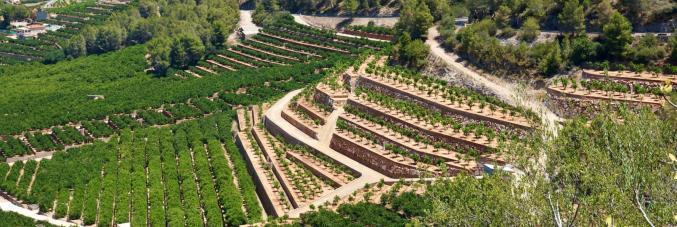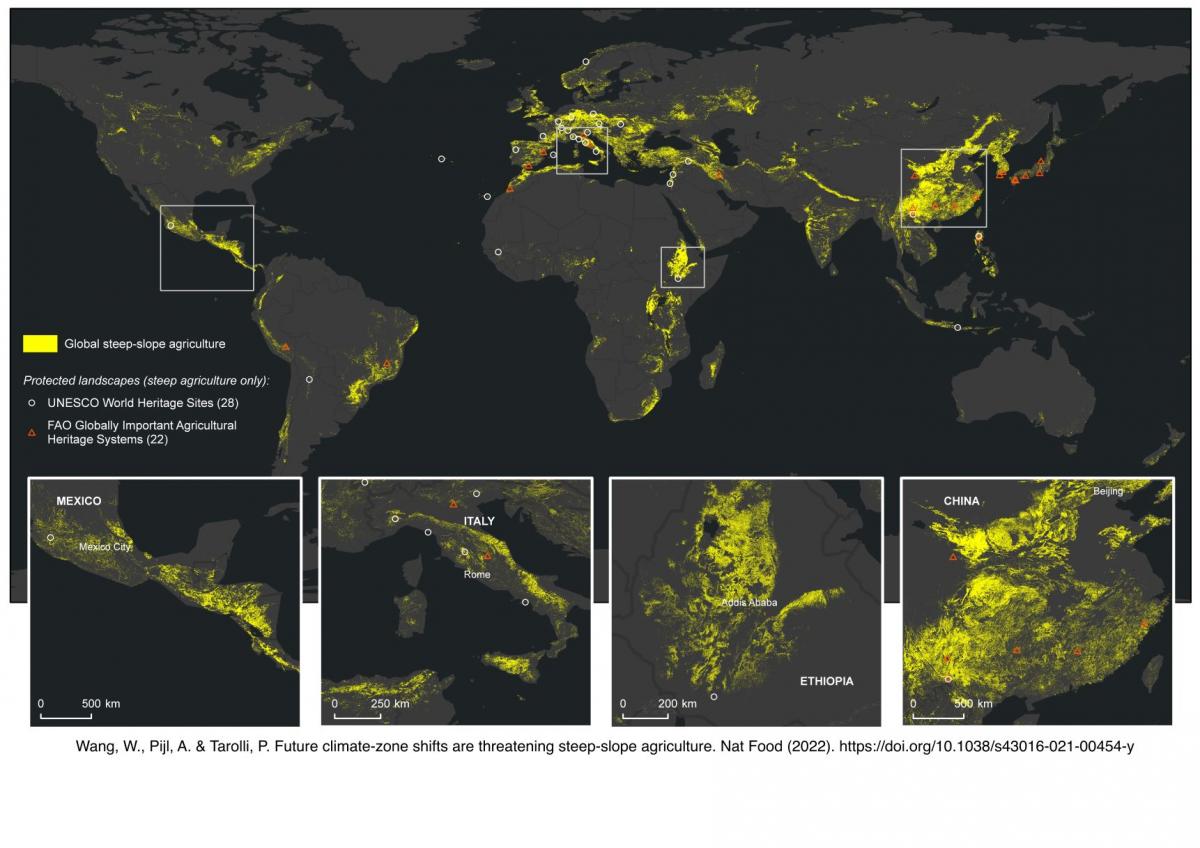
Climate change and agriculture: a unipd study
22.02.2022
Prof Paolo Tarolli of the Department of Territory and Agro-Forestry Systems at the University of Padua coordinated the study. The study entitled, Future climate-zone shifts are threatening steep-slope agriculture, by Wendi Wang, Anton Pijl, and Paolo Tarolli demonstrates the impact of climate change on steep-slope agricultural areas at end of the 21st century. The study uses projections taken of the current climatic zones (1980-2016) towards the end of the 21st century (2071-2100). The study uses Representative Concentration Pathway 8.5, which corresponds to the pathway with the highest greenhouse gas emission. The Google Earth Engine online platform combines open-source satellite data on land cover and topography, a methodology available not only for land management by scientists but also by those in the agricultural sector.
Paolo Tarolli explains, “Our study has produced a high-resolution global map of hilly and mountainous agricultural landscapes, analyzing their distribution in the current climatic zones (tropical, arid, temperate, cold, and polar) and in future climate projections. We demonstrate that the threat to steep sloping agricultural by climate change is higher than other global agricultural areas. We will see an expansion of areas with an arid climate that led to water scarcity conditions.”
Agricultural systems in steep-sloped areas, although representing a small fraction of the global agricultural area, are of great significance. The agronomic importance, as well as the historical and cultural value, of these areas are widely recognized by the United Nations, and protected under the (UNESCO) World Heritage Sites and the Food and Agriculture Organization (FAO). Sloping crops are mainly concentrated in Mexico, Italy, Ethiopia, and China, cultivating highly “specialized” crops. Examples include the Honghe terraced areas Hani in the Chinese province of Yunnan, an area that has been managed by the Hani minorities for over 1300 years. The specialized crops of this area produce 48 varieties of rice, creating an ideal habitat for the breeding of cattle, ducks, and fish. In terms of a circular economy, in Italy, this is similar to the vineyards of the Prosecco and Soave hills.

Under present-day conditions, global steep-slope agriculture is mostly found in temperate (46%) and cold (28%) climates, which combined host nearly three-quarters of these landscapes. Less common climates for steep cultivations in present-day conditions are tropical (17%), arid (9%) and polar (1%) regions. Climate change will pose a serious threat to all agriculture and rural systems, impacting crops and food costs. In particular, it will cause a change in the extent of global climatic areas, with significant repercussions on steeply sloping agricultural slopes.



